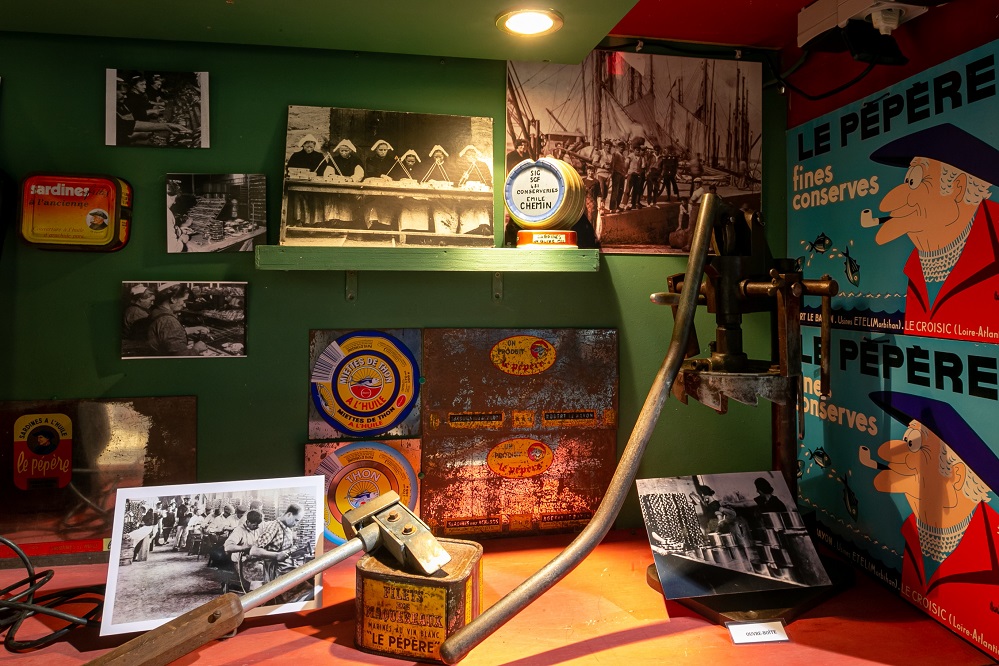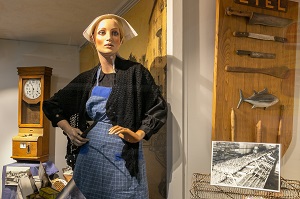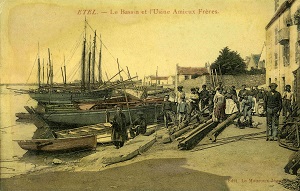
From 1870 onwards, there was a succession of sardine crises.
The beginning of the 19th century was very favourable for sardine fishing. If it is fished on all the French coasts, the sardine constitutes a great economic adventure for Brittany which with it entered the industrial era. The region had a virtual monopoly on pressed sardines.
After being caught, the sardines are lightly salted and stacked. When it arrives at the factories, the fish undergoes a second salting. Between 50 and 75 kilos of salt are added to every 100 kg of fish. By the third day, the small silver fish is afloat in the brine. The actual pressing process takes two weeks. The sardines are then washed and dried before being placed in a second barrel with a hole in the base to allow the oil to drain. the oil and brine to drain out. The filtered oil will be sold as fuel or for the refit of boats. The pressing apparatus is very simple, a press bar comes to rest with all its weight on the top of the removable lid. The sardines treated in this way can be stored for 7 to 8 months.

As early as 1805, Alexandre AUMYE set up the first press in Erdeven, on the outskirts of the coastal village that would later become Étel. In 1806, Pierre MAHEO requested authorisation to set up his own press. In the middle of the century, the land registry records six presses and a sardine cannery. Soon, canneries took over: SOYMIE in 1830, RODEL in 1839, AMIEUX in 1851, CARNAUD in 1854, DUVAL and DANO in 1860. Thanks to APPERT's revolutionary high-temperature sterilisation process and to the preservation process in tin cans developed by COLLIN, the original flavours of the products are preserved.

In 1876, there were 15 factories recruiting several hundred workers, most of whom came from peasant families in Erdeven, Locoal-Mendon and Plouhinec. The factory owners also called on tinsmiths or zinc workers from Nantes, who were nicknamed "zin-zin".
From 1870 onwards, the sardine crises followed one another: Étel was affected from 1886 onwards, the year in which half the factories closed. The town had only 4 canneries left in 1890. However, the sardine reappeared in 1891. The following year, there was even a great abundance of sardines, but this overabundance caused prices to fall. Gradually, fishermen turned to tuna, a more profitable fishery. It turned out that albacore tuna could be processed very well in factories and its packaging in cans with oil gave excellent results. New canneries were set up: LE BAYON, CHEMIN, LORCY, LE DOUARIN, SAUPIQUET made Étel famous with famous brands such as "Le Pépère", "Capitaine Cook" or "Les délices de Saint-Cado".
